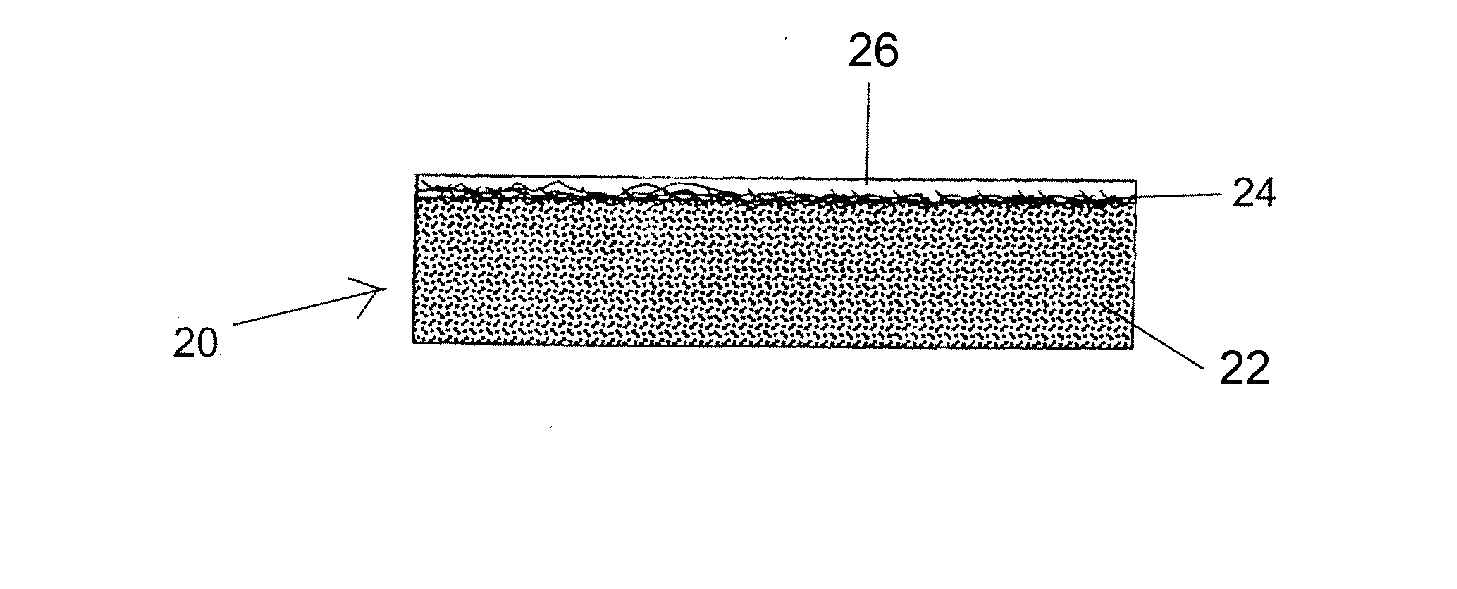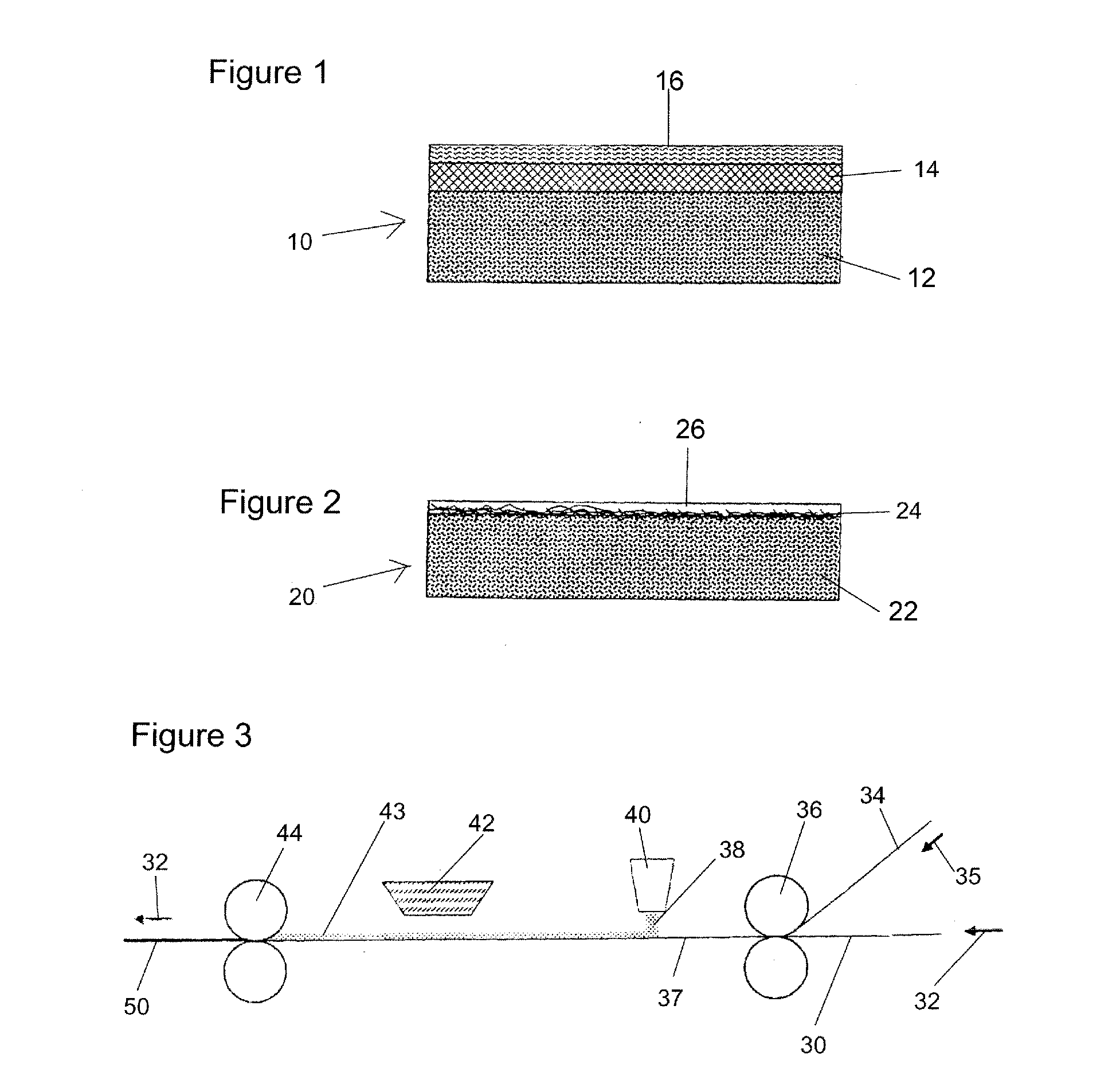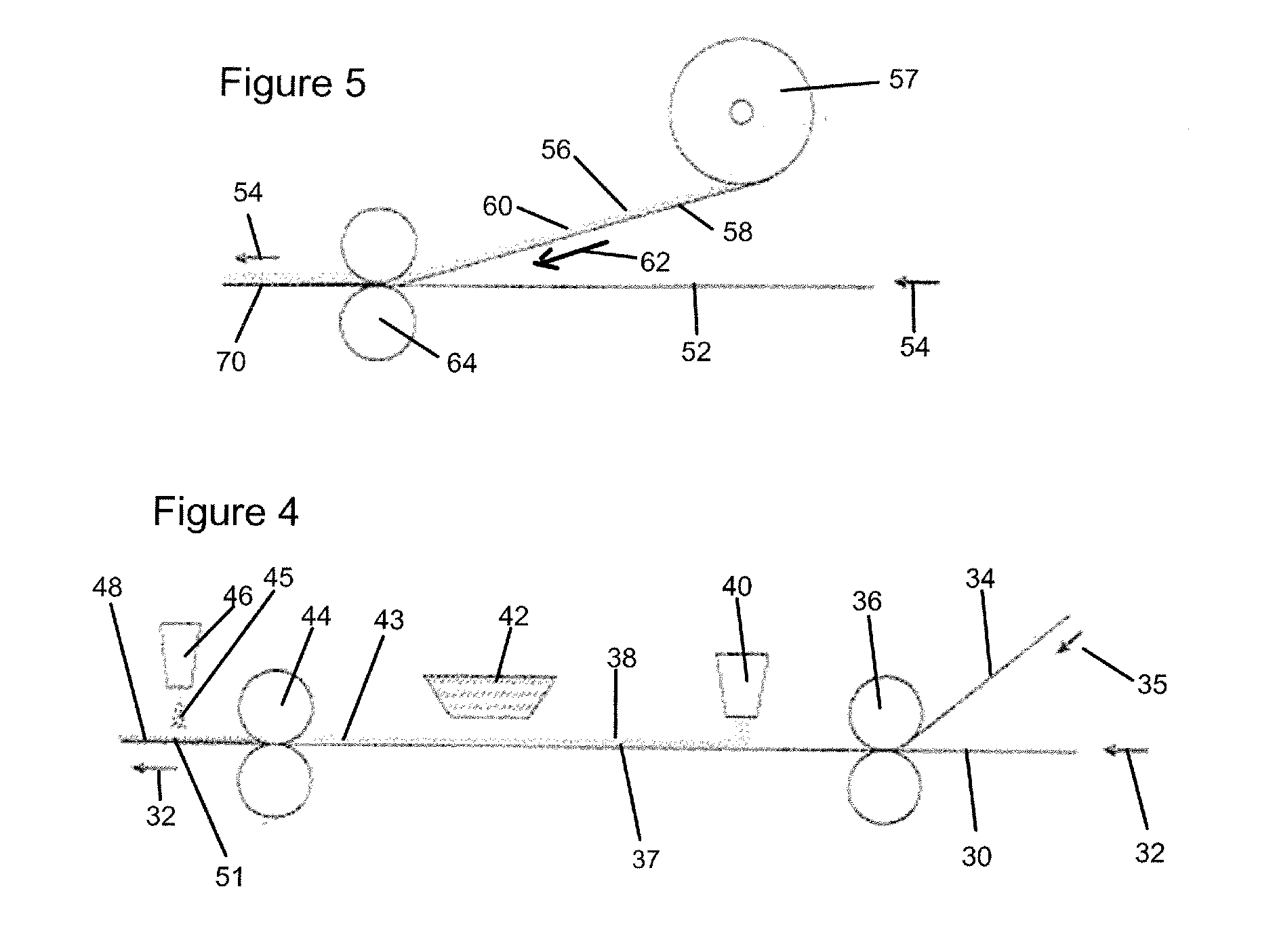Solar Heat Reflective Roofing Membrane and Process For Making the Same
a technology of solar heat reflection and roofing membrane, which is applied in the direction of sustainable buildings, transportation and packaging, and synthetic resin layered products, can solve the problems of low solar reflectivity of shingles and asphalt-based roofing membranes, elevated roof temperatures, etc., and achieve high solar heat resistance, and high solar heat resistance.
- Summary
- Abstract
- Description
- Claims
- Application Information
AI Technical Summary
Benefits of technology
Problems solved by technology
Method used
Image
Examples
example 1
[0100] A 12.7 cm by 12.7 cm (5 inch×5 inch) piece of an asphalt-based, self-adhering roofing base sheet (WinterGuard, commercially available from CertainTeed Corporation, Valley Forge, Pa.) is first heated to about 50 degree C. and then a non-woven glass fiber mat (1.8 lb. mat available from Johns Manville Corp.) is laminated onto the self-adhering side of the base sheet using a 12.3 kg (27 lb.) roller. A white powder coat mixture consisting of 6.05 g clear acrylic powder (Ultra Detail from Mark Enterprises, Anaheim, Calif.) and 2.66g of TiO2 white pigment (TiPure R-102 from DuPont Corp.) is then deposited onto the surface of the glass fiber mat using a perforated hand shaker until the surface is covered with a uniform layer of the power coat. The resultant sheet is then heated under infrared heat lamps to a surface temperature of 116-121 degrees C. (240-250 degrees F.) until the powder coat is completely melted and the tie-layer filled to form a uniform white coating. The resultant...
example 2
[0101] A 12.7 cm by 12.7 cm (5 inch×5 inch) of an asphalt-based, self-adhering roofing base sheet (WinterGuard, commercially available from CertainTeed) is first heated to about 50° C. and then a non-woven glass fiber mat (1.81 lb. mat available from Johns Manville Corp.) is laminated onto the self-adhering side of the base sheet using a 12.3 kg (27 lb.) roller. A white powder coat of nylon 11 with melting temperature of about 186 degrees C. (Rilsan 11 polyamide from Atofina Chemicals, Inc., Philadelphia, Pa.) is then deposited onto the surface of the glass mat using a perforated hand shaker until the surface is covered by a uniform layer of the powder coat. The resultant sheet is then pressed under a hot plate with the top plate set at 193 degrees C. (380 degrees F.) and bottom plate set at room temperature using pressing load of 3630 kg (8000 lb.), holding time of 15 seconds, and a gauge bar of 0.24 cm ( 3 / 16 inch) to prevent over-press. The resultant sample of roofing membrane ha...
example 3
[0102] Roofing membranes having inert mineral particles derived from crushed slate rocks as tie layer (particle sizes ranging from US mesh #20 to #70, available from CertainTeed Corp., Glenwood, Ariz.) were coated with acrylic latex containing 25 wt % TiO2 as solar heat reflective material. The coatings were applied by air-assisted spraying nozzles (Kinetix Airspray LP spray gun with 0.090″ nozzle tip, available from Nordson Corp., Amherst, Ohio), electrostatic spray (ES) with rotary atomizer (RA-20 Rotary Atomizer available also from Nordson Corp), and the combination of both. The spray applications were carried out at conveyor speed of 50 feet per minute. Table 1 lists the spraying conditions and the results of their color and solar reflectance measurements. In Run #6, a primer of acrylic based water emulsion was first sprayed on the membranes, followed by a topcoat of same acrylic latex. The coatings were then cured to form the reflective membrane. These examples show that coated...
PUM
| Property | Measurement | Unit |
|---|---|---|
| Time | aaaaa | aaaaa |
| Temperature | aaaaa | aaaaa |
| Heat | aaaaa | aaaaa |
Abstract
Description
Claims
Application Information
 Login to View More
Login to View More - R&D
- Intellectual Property
- Life Sciences
- Materials
- Tech Scout
- Unparalleled Data Quality
- Higher Quality Content
- 60% Fewer Hallucinations
Browse by: Latest US Patents, China's latest patents, Technical Efficacy Thesaurus, Application Domain, Technology Topic, Popular Technical Reports.
© 2025 PatSnap. All rights reserved.Legal|Privacy policy|Modern Slavery Act Transparency Statement|Sitemap|About US| Contact US: help@patsnap.com



